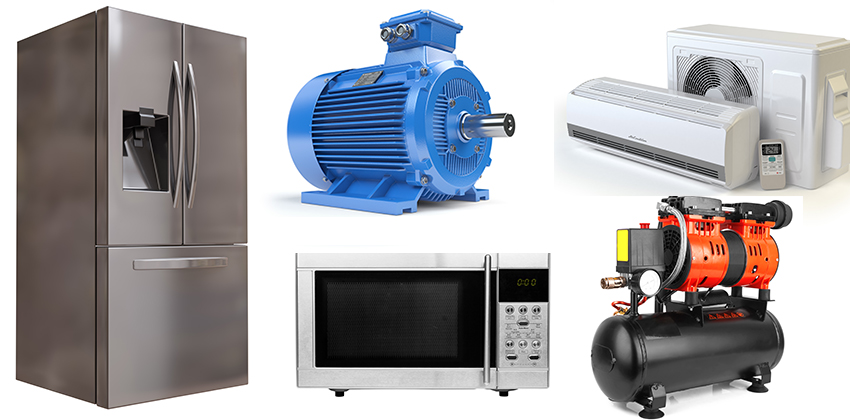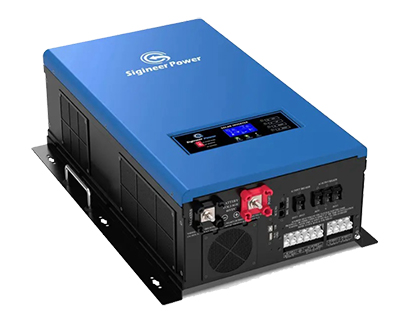Why Choose a Low-Frequency Transformer-Based Inverter Over a High-Frequency Transformerless Inverter?
When selecting an inverter for an emergency power system, one of the most critical decisions is choosing between a low-frequency transformer-based inverter and a high-frequency transformerless inverter. While both types have their applications, low-frequency inverters provide several advantages that make them the superior choice for many emergency power applications. Lets examine why a low-frequency transformer-based inverter might be the best investment for battery backup setup.
1. Superior Surge Capacity Low-frequency inverters are well known for their ability to handle high inductance loads, often delivering three times their rated power for short periods. This is particularly beneficial for emergency systems that power appliances with high startup surges, such as refrigerators, air conditioners, pumps, and power tools. High-frequency inverters, in contrast, generally have a much lower surge capacity and often times struggle to handle such demanding loads.

2. Durability and Longevity Low-frequency transformer-based inverters are built with robust copper-wound transformers, making them more durable and resistant to wear and tear. They are better suited for continuous, heavy-duty use and can handle hostile environmental conditions. High-frequency inverters rely on electronic switching without a heavy transformer, making them more compact but less durable in high-power, high surge applications.
3. Improved Reliability in Harsh Conditions Battery backup systems are often installed in remote or extreme environments. Low-frequency inverters are better equipped to withstand harsh temperature variations, power fluctuations, and electrical noise. Their transformer-based design provides greater tolerance to power line disturbances and fluctuations, ensuring consistent and stable performance.
4. Pure Sine Wave Output for Sensitive Electronics Most low-frequency inverters produce a high-quality pure sine wave output, which is crucial for sensitive electronics and appliances. This ensures efficient operation of medical equipment, computers, and modern appliances without the risk of interference or malfunctions. While many high-frequency inverters also offer pure sine wave output, their performance under fluctuating loads is often not as stable.

5. Compatibility with Larger Battery Banks and Generators A low-frequency inverter is generally more compatible with large battery banks and backup generators. These inverters are often designed with built-in chargers that support high charging currents, making them ideal for emergency power and off-grid applications that require significant energy storage. High-frequency inverters may have limitations when handling large-capacity battery systems, leading to inefficiencies in charging and power distribution.
6. Reduced Risk of Overheating Because low-frequency inverters use a large transformer, they generate less heat under heavy loads compared to high-frequency inverters, which rely on fast-switching silicon based transistors that can overheat under continuous high power demands. This makes low-frequency inverters a safer and more reliable choice for extended use in high-power applications.
7. Better Performance for Inductive Loads Inductive loads, such as motors and compressors and large power tools, require a stable and robust power supply to operate efficiently. Low-frequency transformer-based inverters provide better voltage regulation and smoother power delivery for these loads, reducing stress on the equipment and extending its lifespan.
When to Consider a High-Frequency Inverter While low-frequency inverters have clear advantages, high-frequency inverters may still be a suitable choice in situations where: Portability and compact design are priorities. The power demand is relatively low and does not require high surge capacity. Cost savings on initial investment outweigh the need for long-term durability.
Conclusion: The Right Choice for Emergency Power and Off-Grid and Heavy-Duty Applications For those who rely on off-grid and emrgency power systems for their homes, businesses, or remote operations, a low-frequency transformer-based inverter is the best choice for durability, reliability, and high surge capacity. While high-frequency inverters may be lighter and less expensive, they often fall short in performance when dealing with heavy loads, inductive appliances, and harsh environmental conditions. Investing in a high-quality low-frequency inverter ensures long-term stability and efficiency, making it the preferred option for serious off-grid power users. If you're considering upgrading or installing a new inverter, choosing a low-frequency transformer-based model could be the smartest decision for your energy system.


0 Comments
.